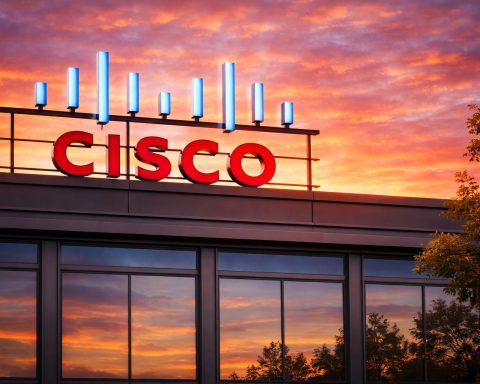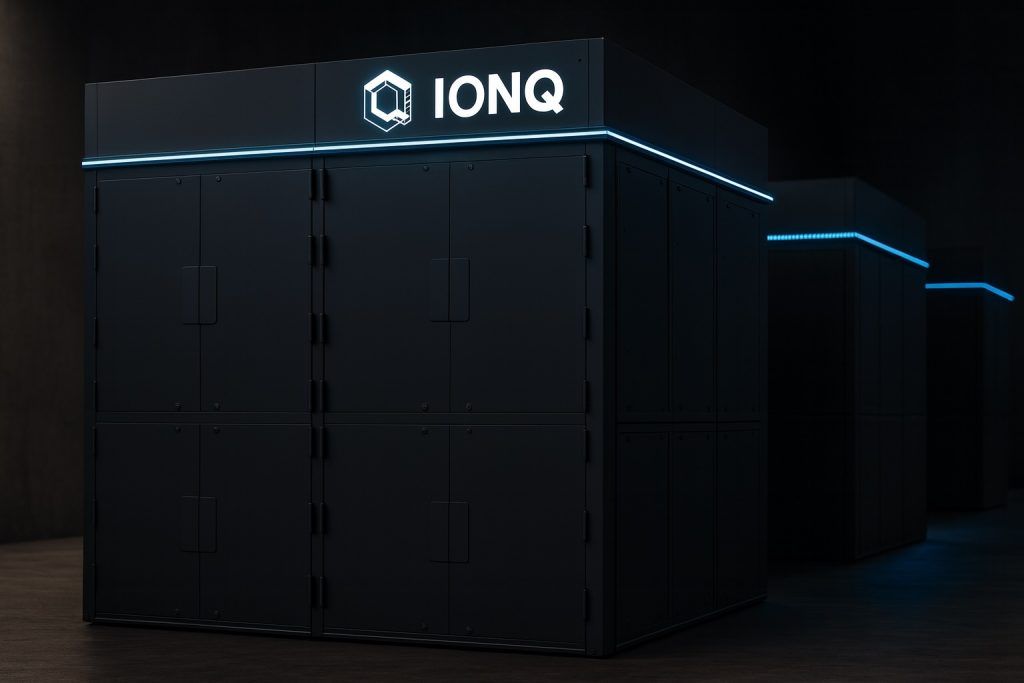- Wild 2025 Rally: Cipher Mining Inc. (NASDAQ: CIFR) has surged over 300% year-to-date, hitting all-time highs around $20 per share in mid-October amid a Bitcoin price boom and a major Google-backed AI hosting deal [1].
- Volatile Pullback & Rebound: After peaking, CIFR slid ~24% over the next week as Bitcoin retreated from recent highs and crypto markets turned risk-off [2]. However, shares bounced nearly 20% on Oct. 24 – jumping 12.7% early that day on news of Jane Street taking a ~5% stake – and closed back near $20, almost erasing the week’s losses [3] [4].
- Crypto Market Context:Bitcoin hovers around $108K (off from ~$114K a few days prior), and the total crypto market cap is down ~16% from its peak – moves that have pressured miner stocks across the board [5]. Still, Bitcoin remains roughly 4× higher than a year ago, fueling outsized gains for mining companies in 2025.
- AI Pivot Powers Growth: Cipher’s transformative 10-year, $3 billion cloud hosting contract (with AI firm Fluidstack, backed by Google) is set to generate high-margin revenue. This strategic “Bitcoin + AI” pivot – dedicating 168 MW of its new Texas data center to AI workloads – bolstered CIFR’s valuation and inspired similar moves by peers [6].
- Outlook Mixed:Wall Street is bullish – 12 of 15 analysts rate CIFR a “Buy” with price targets as high as $24–$25 [7]. But experts warn of extreme volatility. Some chartists see a bearish pattern that could pull the stock back toward ~$6 if crypto trends worsen [8], while bulls note big institutions are “still accumulating” shares on dips [9] [10].
CIFR Stock’s Roller-Coaster Run in 2025
Cipher Mining’s stock has been on a roller-coaster ride this year. It began 2025 trading under $2, then rocketed into the high teens and low $20s by mid-October [11]. On October 13, CIFR closed at $20.34, a record high (and nearly +320% year-to-date) [12]. This meteoric rise far outpaced the S&P 500 – and even Bitcoin itself – over the same period. Investors were drawn in by soaring Bitcoin prices and Cipher’s buzzworthy foray into AI data centers (more on that below).
However, the euphoria abruptly turned into a shake-out heading into late October. After peaking in mid-month, CIFR pulled back sharply. By October 21 the stock had dipped to the mid-$17s, and it slid further to the mid-$15s on Oct. 22 amid a broader sell-off in crypto-exposed equities [13]. In just five trading sessions, Cipher shed roughly one-quarter of its value – a whiplash from exuberance to correction. Market watchers attributed the stumble largely to crypto market volatility: Bitcoin, which had just hit an all-time high around $125K in early October, fell back to ~$108K by Oct. 22 [14]. “Crypto-related stocks, particularly bitcoin miners turned AI infrastructure plays, were suffering heavy losses” mid-week, CoinDesk noted, with Cipher and peers down 10–15% in a single session [15].
Yet by that week’s end, Cipher’s fortunes flipped again. On Oct. 24, news that Wall Street trading giant Jane Street disclosed significant passive stakes in several miners (about 5% of Cipher Mining and similar stakes in Bitfarms and Hut 8) ignited a sector-wide rally [16] [17]. Investors interpreted the move as a powerful vote of confidence in the industry’s prospects. CIFR stock leapt 12.7% to $19.44 shortly after Friday’s open, leading all miners in gains [18]. It kept climbing through the day – by the market close, Cipher was up 19.7% for the day at roughly $20.66 [19]. This rebound almost erased the week’s earlier losses, underscoring the stock’s extreme volatility. In the span of 10 days, CIFR went from record highs, to a steep pullback, and back near highs again – encapsulating the wild swings that crypto mining stocks are known for.
Bitcoin Boom and a Game-Changing Google Deal
The backdrop to Cipher’s surge is the 2025 Bitcoin boom. Bitcoin’s price tripled over the past year, hovering around $115K–$120K through mid-October (near record territory) [20]. This rally – fueled by record-breaking ETF investment inflows (over $6 billion in one week) and rising institutional adoption – sent mining stocks soaring across the board [21]. High Bitcoin prices directly boost miners’ revenues and margins, so it’s no surprise that when Bitcoin hit ~$125K earlier in October, investors piled into names like Cipher to ride the wave. For example, on October 13, as Bitcoin rebounded from a brief dip, Cipher’s stock spiked ~20% intraday amid a broad crypto-mining rally (peers Bitfarms and Bitdeer surged ~26% and ~10% that day) [22]. In short, Bitcoin’s bull run set the stage for Cipher’s explosive gains.
However, Cipher Mining’s story isn’t just about Bitcoin. The company has aggressively pursued an “AI pivot” that sets it apart from a typical miner. In late September, Cipher announced a landmark 10-year cloud hosting contract with Fluidstack, an AI/high-performance computing provider backed by Google. Under the deal, Cipher will dedicate 168 MW of its new Texas data center (“Barber Lake”) to host AI workloads, and Google is reportedly financing about $1.4 billion of the contract and even taking a ~5% equity stake in Cipher [23]. The contract is valued around $3 billion in guaranteed revenue over the decade (with potential expansion up to $7B) – a massive sum considering Cipher’s quarterly revenue was only ~$44 million as of Q2 2025 [24]. Crucially, the AI hosting business carries estimated gross margins of 80–85%, far higher and more stable than the notoriously volatile margins in Bitcoin mining [25].
This transformative deal essentially pre-fills Cipher’s new 150 MW “Black Pearl” data center in Odessa, TX with a long-term, blue-chip tenant. It instantly legitimized Cipher as a hybrid Bitcoin miner + AI cloud play, a narrative that electrified investors. “Cipher’s stock has surged thanks to a transformational high-density data center deal – essentially an AI cloud pivot,” one analysis noted [26]. The market reacted accordingly: CIFR jumped 9.6% on Oct. 2 when the news broke, then kept climbing on heavy volume for days [27]. By Oct. 8, shares hit ~$18 (a ~7× gain since spring) amid frenzied buying and bullish commentary from analysts [28]. In short, the combination of Bitcoin’s rally and Cipher’s Google-backed AI deal created a perfect storm driving the stock’s explosive rise.
Industry Trends: Miners Pivot to AI as Crypto Volatility Returns
Cipher’s recent swings highlight how tightly these stocks remain correlated with the broader crypto market – for better and worse. When Bitcoin suddenly pulled back from ~$114K to ~$108K on Oct. 21–22, it triggered a wave of profit-taking across crypto equities [29]. The total crypto market cap slid by over 16% (from ~$4.32 trillion down to ~$3.64T) in that period [30]. Crypto-exposed stocks from miners like Cipher and Marathon to exchanges like Coinbase all felt the pain, dropping sharply in sympathy [31]. As CoinDesk observed, “momentum names are taking a beating… AI-related stocks leading that list,” referring to Bitcoin miners that had pivoted into the AI hype [32]. A popular sector ETF (the CoinShares Bitcoin Mining Index, ticker: WGMI) fell ~7% on Oct. 22 [33], reflecting the broad pullback in mining equities. This week served as a reminder that crypto market volatility remains a double-edged sword for these stocks.
Despite near-term jitters, industry fundamentals appear robust. Bitcoin’s network hash rate recently hit all-time highs above 1 zettahash (1,000 EH/s) in late September as miners deployed more machines to capitalize on high BTC prices [34]. Even after a slight dip by mid-October, roughly 38% of global hash power was being run by publicly-listed U.S. miners [35] – a testament to how dominant North American firms like Cipher, Marathon, and Riot have become. Mining difficulty has also surged to record levels, which does squeeze profit per BTC mined, but at current Bitcoin prices around $100K+, mining remains highly profitable for the most efficient operators [36] [37]. Cipher benefits here by having some of the industry’s lowest power costs – it builds facilities next to wind and solar farms in West Texas, securing electricity rates around 2.7¢/kWh in some cases [38]. That ultra-low-cost base gives it a cushion as energy and difficulty costs rise.
Another major trend in 2025 is the convergence of crypto mining and AI computing. Skyrocketing demand for AI servers has led to data center capacity shortages – in fact, Microsoft warned that U.S. cloud data centers are largely maxed out until 2026 [39]. Enter the Bitcoin miners: many have large power contracts and high-density cooling infrastructure that can be repurposed for AI far faster than building new data centers from scratch [40]. Wall Street firm Bernstein recently highlighted this dynamic, calling Bitcoin miners “strategic enablers” of the AI boom, since miners control an estimated 14+ GW of power capacity that could be redirected to AI workloads [41]. This context explains why companies like Cipher are landing sizable AI hosting deals – and why investors have flocked to the “AI pivot” narrative across the mining sector [42]. In fact, several of Cipher’s peers are now following suit: for example, competitor CleanSpark just announced it will expand from pure Bitcoin mining into offering AI compute services (even hiring a Senior VP of AI data centers) [43]. Canada’s Hive Digital likewise is growing its HPC/AI operations fivefold via new partnerships [44]. The bottom line is that crypto miners are rapidly reinventing themselves as hybrid Bitcoin + AI infrastructure providers, which could open new revenue streams but also introduces new execution risks.
How Cipher Stacks Up Against Competitors
In terms of sheer scale, Cipher is now in the top tier of publicly traded Bitcoin miners. The company had about 16.8 exahashes/second (EH/s) of Bitcoin mining capacity online by mid-2025, with plans to reach ~23.5 EH/s by year-end [45]. That’s comparable to industry leaders Marathon Digital (MARA) and Riot Platforms (RIOT), which each hover in the 20–25 EH/s range. All are racing to install the latest-generation ASIC rigs to grab share of Bitcoin’s network before the next halving in 2028. Cipher’s new 150 MW facility coming online boosted its hash rate significantly, and the company boasts a pipeline of up to 2.6 gigawatts of total power capacity in development for future growth [46]. Successfully executing on that pipeline could make Cipher one of the largest Bitcoin miners globally in the coming years.
Like CIFR, shares of Marathon and Riot have soared in 2025 thanks to Bitcoin’s run. Marathon recently traded around $20 (near its 52-week high) and Riot around $21 [47] – each up several hundred percent from January levels, similar to Cipher. All three sport market capitalizations in the ballpark of $7–8 billion by mid-October [48]. Notably, despite their size, neither Marathon nor Riot has announced a major AI hosting pivot; they remain primarily focused on expanding Bitcoin mining capacity. Cipher’s willingness to embrace a dual Bitcoin-and-AI strategy gave it an extra aura of growth, helping CIFR stock outrun some peers until the recent pullback.
Other rivals saw even bigger percentage moves this year. Iris Energy (IREN), an Aussie miner, surged over 500% year-to-date by early October [49], becoming a market darling due in part to its own emphasis on data center opportunities. Bitfarms (BITF), a Canadian miner, climbed from about $1 in January to the $4–5 range (a 400% leap) before cooling off [50]. CoinDesk noted that by Oct. 22, Bitfarms had fallen ~40% from its peak, trading just above $4 [51] amid the crypto pullback. Even industry veterans Hut 8 (HUT) and Hive Digital (HIVE) joined the fray: Hut 8’s stock ran up alongside Bitcoin’s strength (the company is in the process of merging with US Bitcoin Corp), and Hive, as mentioned, is expanding into AI and targeting 35 EH/s of BTC capacity by 2026 [52]. In short, the entire crypto mining sector has been on fire in 2025, though Cipher’s unique profile as an “AI-powered” miner helped it stand out – until a sector-wide slump hit in late October.
Crucially, Cipher has also been proactive in raising capital to fund its expansion. It completed a $1.1 billion zero-coupon convertible debt financing this year to help build out the new data centers [53]. This war chest gives Cipher liquidity to grow and diversify, but it will eventually have to manage that debt (which comes due in 2031). Balance sheet health is a focus for all miners in this capital-intensive business. Cipher entered 2025 with a strong current ratio (~4.2) and low debt, but with the new financing, investors will be watchful of how that impacts leverage over time [54]. The good news is that the Google-backed contract materially reduces financing risk going forward – as analysts at Canaccord noted, having a big customer in hand and partial funding secured makes it easier for Cipher to raise or allocate capital efficiently [55]. That advantage could prove important as competition to build next-gen mining and AI facilities heats up.
Financials and Investor Analysis
Despite the stock’s huge gains, Cipher Mining’s financials are still in early innings. The company remains unprofitable on a net income basis as it scales up. In Q2 2025, Cipher reported revenue of $44.0 million and adjusted EBITDA of $30 million, but a GAAP net loss of ~$46 million (–$0.12 per share) [56]. For context, larger rival Marathon did ~$238M in revenue that quarter and Riot about $153M [57]. Cipher’s smaller current revenue reflects that it came into 2025 with a smaller mining fleet – but also highlights the growth expectations now baked into its stock price. At ~$20 per share, Cipher’s market cap is around $8 billion, which means it trades at a lofty multiple of current revenues (price-to-sales is sky-high, and trailing P/E is negative) [58] [59]. In other words, the market is valuing Cipher not on what it earned last quarter, but on what it could earn in the future if its expansion and contracts deliver results.
Analysts believe a sharp inflection is coming. Once the Fluidstack/Google hosting revenues kick in (the first phase is expected to go live in 2025–26), Cipher should start generating a steadier cash flow stream that is less tied to Bitcoin’s price swings. That could accelerate the timeline to profitability. Indeed, some Wall Street models project Cipher will reach breakeven or even modest positive earnings in 2025 as the hosting income ramps up [60] [61]. However, much depends on execution: investors will want to see progress on building out the 168 MW AI data hall on schedule and within budget. Cipher is scheduled to report its Q3 2025 earnings on Oct. 30 [62], and in that report management’s commentary will be crucial. Key updates to watch for include: the timeline for deploying the AI infrastructure (and any additional hosting deals in the pipeline), progress toward the year-end ~23.5 EH/s Bitcoin hash rate goal, and how power costs and mining output are trending with Bitcoin’s volatility.
Notably, Cipher’s leadership has seen some changes as it evolves. In early October, the company’s longtime CFO, Ed Farrell, retired, and Cipher appointed Greg Mumford – a former digital assets investment banker – as the new CFO [63]. This move was viewed positively by analysts, as Mumford’s experience could aid in managing growth and complex projects. Cipher’s CEO, Tyler Page, has been vocal about the company’s broader vision. Referring to the Fluidstack AI agreement, Page said “we believe this transaction represents the first of several in the HPC space as we continue to scale our capabilities” [64]. In other words, Cipher doesn’t intend for the Google-backed deal to be a one-off; it sees itself becoming a significant player in high-performance computing hosting. If they can secure additional contracts (perhaps in cloud, AI or even government sectors), it would further validate the strategy – but until then, the current valuation implies a lot of optimism. As one Yahoo Finance summary put it, the combination of the Bitcoin boom and the Google-backed AI pivot has “propelled the company’s stock,” pushing Cipher’s market cap into multi-billions on future promise [65].
Wall Street Sentiment and Expert Views
By and large, Wall Street analysts remain upbeat on Cipher Mining despite the recent turbulence. According to MarketBeat data, 12 out of 15 analysts covering CIFR rate it a “Buy,” versus only 2 Holds and 1 Sell [66]. Many have been scrambling to raise their price targets as the stock outran earlier predictions. Recent targets range widely – from as low as ~$12 to as high as $24–$25 at the bullish end [67]. For instance, BTIG Research bumped its target to $25 (with a Buy rating) after Cipher announced the Google/AI deal [68]. The consensus price target sits around the high-teens ( ~$17–18) [69], which interestingly is below the stock’s current trading range. This suggests some analysts’ models have struggled to keep up with Cipher’s fast-evolving story and the stock’s rapid ascent. Still, the bullish consensus reflects an expectation of further upside from the mid-$ teens levels, assuming the company executes well.
Market commentators and traders are more divided in their short-term views, given the stock’s volatility. On the cautious side, some technical analysts note that CIFR’s chart may be forming a bearish “head-and-shoulders” pattern after its parabolic rise. If that pattern plays out, “the implication is that the security can land back at support around $6,” one commentator observed [70] – a stark downside scenario that would retrace much of the 2025 gain. Skeptics also point to insider selling: in early October, a major shareholder (Bitfury, Cipher’s original parent) and a co-COO collectively sold over 22 million shares of Cipher, cashing in on the rally [71]. While one co-COO’s sale of ~45,000 shares was small (not a red flag by itself), the larger shareholder sale raised some eyebrows, suggesting insiders thought it was a good time to take profits [72]. Moreover, at an ~$8B valuation, bears argue Cipher’s valuation is full – the company trades at a lofty multiple of current revenues and still has negative earnings, so any stumble in the new AI venture or a major drop in Bitcoin prices could squeeze its still-negative profit margins [73].
On the bullish side, many see the recent dip as a healthy breather within a longer-term uptrend. Even after pulling back, CIFR is well above key support levels – for instance, the stock’s 50-day moving average is only around $9.50 (and the 200-day near $5.90), so in the mid-teens it’s still elevated above long-term technical support [74]. Proponents argue that Cipher’s fundamentals are set to improve dramatically in coming quarters: once the Google/AI contract revenue begins, Cipher will have a stable income stream that’s largely immune to Bitcoin’s day-to-day fluctuations [75]. That could start to transform the financial profile of the company. There are also signs of savvy investors buying the dip. “The data appears to show that the pros remain buyers of CIFR stock,” noted Money Morning, citing options flow analysis indicating that institutional players were accumulating shares during the recent pullback [76]. Indeed, October’s crypto stock drop seemed driven more by a broad market risk-off move (and profit-taking) than by any Cipher-specific issue. Some analysts therefore view the volatility as an opportunity. “CIFR could be an interesting proposition for long-term speculators,” the Money Morning report concluded, so long as one can stomach near-term swings [77].
Regulatory and Geopolitical Developments
The regulatory backdrop for Bitcoin mining is a mixed bag in 2025, with some regions welcoming miners and others cracking down – developments that could indirectly impact Cipher and its peers. In the U.S., federal policy has tilted more crypto-friendly this year. Notably, President Trump (back in office) even issued a surprise pardon for a prominent crypto figure, Binance founder Changpeng Zhao, framing it as opposition to the previous administration’s “war on cryptocurrency” [78] [79]. While that act doesn’t directly affect mining, it signaled a broader pro-crypto stance. U.S. regulators and lawmakers are also actively working on clearer frameworks: in October, bipartisan Senate discussions and pending legislation aimed to establish comprehensive market structure rules for digital assets by 2026 [80] [81]. A more defined U.S. regulatory environment – including potential approval of Bitcoin ETFs – could further encourage institutional investment in the crypto sector, benefiting companies like Cipher.
At the same time, energy usage and climate concerns are drawing scrutiny to crypto mining. Some jurisdictions are taking action. For example, New York State lawmakers introduced a bill in October to impose new taxes on electricity for crypto mining operations, targeting large-scale miners based on their energy consumption [82]. The proposed excise tax (ranging from 2 to 5 cents per kWh for big users) would exempt mining facilities powered entirely by off-grid renewables [83] – essentially incentivizing greener practices. If enacted (not until 2027 at earliest), such a law could raise costs for miners relying on grid power in New York and might deter new mining farms there. On an international front, Canada’s British Columbia moved to ban new crypto-mining projects from connecting to its public electricity grid, formalizing a previously temporary moratorium [84]. BC’s government cited the need to preserve power for industries that offer greater economic and environmental benefits, arguing that large crypto mines don’t create enough local jobs or value to justify their huge energy draw [85]. Interestingly, BC’s policy also set caps on energy allocations for artificial intelligence and data centers – indicating that even AI infrastructure is being rationed due to power constraints [86]. This highlights a potential challenge: as miners pivot to AI, they may encounter similar regulatory pushback about energy usage.
For Cipher, which operates primarily in Texas, the regulatory climate is relatively favorable. Texas has positioned itself as a crypto-mining hub with abundant wind/solar power and friendly policies (e.g. miners can participate in grid balancing programs). However, the company will be mindful of these broader trends. Any future expansion will consider the geopolitical landscape of energy – regions with cheap, renewable power and supportive policies will attract new data centers, while areas with strict regulations or high taxes will be less appealing. Additionally, international developments such as Europe’s evolving crypto frameworks or Asia’s mining rules could shape the competitive environment. Thus far, 2025’s regulatory moves send a clear message: sustainability and grid impact are under the microscope. Miners like Cipher that invest in renewables and can tout high efficiency may have a smoother ride, whereas those seen as straining public power resources could face headwinds.
Outlook: High Potential, High Volatility
Looking ahead, Cipher Mining sits at the crossroads of two booming but unpredictable sectors – cryptocurrency and AI. The remainder of 2025 and beyond will test how well the company can execute its dual strategy and navigate the inevitable market gyrations. In the near term, volatility is likely to stay elevated. Technical indicators had flashed “overbought” before the latest drop (CIFR’s 14-day RSI spiked above 70 in mid-October), and such a blistering rally often leads to choppy trading or further corrections [87]. Traders are watching to see if Cipher can hold a support base around the mid-teens (roughly $15–16, which was its pre-breakout range) or if another break below that level occurs. Bitcoin’s price direction will remain a huge factor. At ~$108K, BTC is still up ~4× year-on-year, but some analysts warn of a possible short-term dip below $100K as early investors take profits [88]. Any such dip could drag down miner stocks like Cipher again in the short run. Conversely, there are bullish wildcards on the horizon – for instance, if a spot Bitcoin ETF gets approved or if global liquidity remains strong, Bitcoin could resume its climb, potentially carrying CIFR back above $20 and toward new highs.
From a fundamental perspective, Cipher’s upcoming milestones will be critical in determining whether its rich valuation is justified. The Q3 earnings report on Oct. 30 will give a snapshot of how the core mining business is faring amid Bitcoin’s swings, and more importantly, any guidance on the Fluidstack AI project. If Cipher demonstrates tangible progress on building out the 168 MW AI hosting facility (part of the $3B contract) and perhaps hints at expanding that deal or signing new ones, it could reinforce the bull case that the company’s 2025 revenue surge is only beginning [89] [90]. Achieving its year-end hash rate target and controlling costs will also signal that management is delivering on promises. On the flip side, delays or hiccups in the AI data center rollout, or a scenario where Bitcoin enters a deeper bear phase, would likely temper the market’s enthusiasm. Cipher will also eventually need to show a path to sustainable profitability – analysts currently forecast that with the high-margin hosting income, adjusted earnings could turn positive by late 2025 [91], but until those profits actually materialize, sentiment can swing quickly.
Overall, the long-term vision for Cipher Mining is enticing: a next-generation crypto miner that also doubles as an AI infrastructure provider. Wall Street’s base case is that Cipher will successfully transition into this hybrid role and continue growing – hence the predominance of Buy ratings and aggressive price targets. As one industry report noted, well-positioned miners could become crucial partners in the AI revolution, essentially turning their energy assets into computing gold mines [92]. Cipher itself has been described as an “AI data-center host with a Bitcoin kicker,” a unique profile in the public markets [93]. If Bitcoin’s bull market resumes (some optimists point to potential ETF approvals or macro tailwinds that could drive BTC even higher) and if Cipher executes on its big contract, the stock’s upside could reassert itself in a major way [94]. But after this month’s wake-up call, even bulls concede that the era of straight-up, uninterrupted gains might be over. Investors should expect the ride to remain bumpy. As one trader quipped on Reddit after watching CIFR’s stomach-churning swings, “Volatility is the price of admission” for those seeking outsized gains in crypto mining stocks [95]. For Cipher Mining, the 2025 journey isn’t over – it’s simply entering a new chapter, one where both opportunity and risk are on the horizon.
Sources: Key information and quotes were drawn from recent company reports and news coverage, including TechStock² (ts2.tech) analysis, CoinDesk market updates, analyst commentary via MarketBeat and Money Morning, and regulatory news from Lowenstein Sandler [96] [97] [98], among others, with all data current as of October 26, 2025.
References
1. ts2.tech, 2. ts2.tech, 3. theminermag.com, 4. www.fastbull.com, 5. ts2.tech, 6. ts2.tech, 7. ts2.tech, 8. ts2.tech, 9. ts2.tech, 10. ts2.tech, 11. ts2.tech, 12. ts2.tech, 13. ts2.tech, 14. ts2.tech, 15. ts2.tech, 16. theminermag.com, 17. theminermag.com, 18. theminermag.com, 19. www.fastbull.com, 20. ts2.tech, 21. ts2.tech, 22. ts2.tech, 23. ts2.tech, 24. ts2.tech, 25. ts2.tech, 26. ts2.tech, 27. ts2.tech, 28. ts2.tech, 29. ts2.tech, 30. ts2.tech, 31. ts2.tech, 32. ts2.tech, 33. ts2.tech, 34. ts2.tech, 35. ts2.tech, 36. ts2.tech, 37. ts2.tech, 38. ts2.tech, 39. ts2.tech, 40. ts2.tech, 41. ts2.tech, 42. ts2.tech, 43. ts2.tech, 44. ts2.tech, 45. ts2.tech, 46. ts2.tech, 47. ts2.tech, 48. ts2.tech, 49. ts2.tech, 50. ts2.tech, 51. ts2.tech, 52. ts2.tech, 53. ts2.tech, 54. ts2.tech, 55. ts2.tech, 56. ts2.tech, 57. ts2.tech, 58. ts2.tech, 59. ts2.tech, 60. ts2.tech, 61. ts2.tech, 62. ts2.tech, 63. ts2.tech, 64. ts2.tech, 65. ts2.tech, 66. ts2.tech, 67. ts2.tech, 68. ts2.tech, 69. ts2.tech, 70. ts2.tech, 71. ts2.tech, 72. ts2.tech, 73. ts2.tech, 74. ts2.tech, 75. ts2.tech, 76. ts2.tech, 77. ts2.tech, 78. www.lowenstein.com, 79. www.lowenstein.com, 80. www.lowenstein.com, 81. www.lowenstein.com, 82. www.lowenstein.com, 83. www.lowenstein.com, 84. www.lowenstein.com, 85. www.lowenstein.com, 86. www.lowenstein.com, 87. ts2.tech, 88. ts2.tech, 89. ts2.tech, 90. ts2.tech, 91. ts2.tech, 92. ts2.tech, 93. ts2.tech, 94. ts2.tech, 95. ts2.tech, 96. ts2.tech, 97. ts2.tech, 98. www.lowenstein.com







